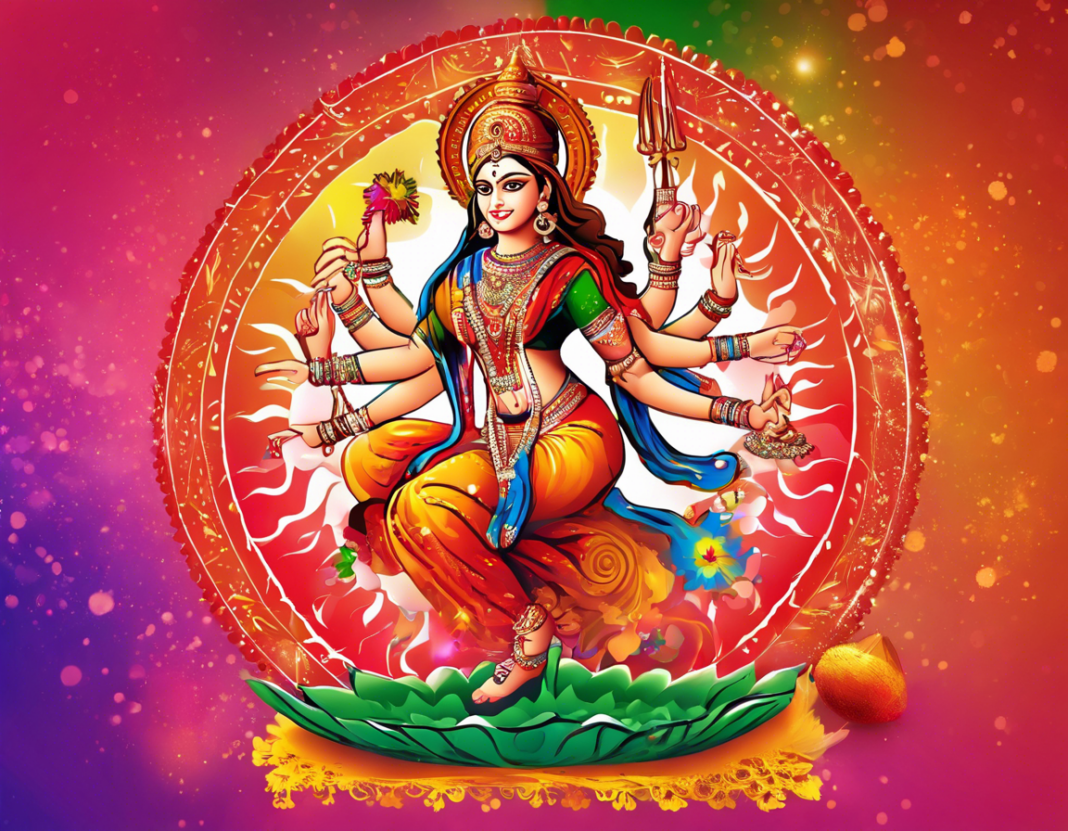Navratri, a vibrant and festive celebration popular in India, is characterized by the traditional practice of wearing different colors each day. The Navratri colors hold significance and are believed to resonate with the festive spirit and the divine energy of the nine-day festival. In 2023, Navratri is anticipated to take place from 24th September to 2nd October. During these nine days, people adorn themselves in specific colors to pay homage to various forms of the goddess Durga. Let’s explore the Navratri colors for 2023 and the significance behind each shade:
Day 1 – Pratipada (24th September 2023) – Yellow
The color yellow symbolizes brightness, happiness, and energy. It signifies the color of the sun, which brings light and warmth to the world. Wearing yellow on the first day of Navratri is believed to enhance positivity and enlightenment.
Day 2 – Dwitiya (25th September 2023) – Green
Green represents harmony, growth, and nature. It is associated with fertility and prosperity. Wearing green on the second day of Navratri signifies new beginnings and a fresh start.
Day 3 – Tritiya (26th September 2023) – Grey
Grey symbolizes stability, composure, and neutrality. It is a color of balance and maturity. Wearing grey on the third day of Navratri signifies strength and resilience.
Day 4 – Chaturthi (27th September 2023) – Orange
Orange represents enthusiasm, creativity, and vitality. It is a color that exudes warmth and energy. Wearing orange on the fourth day of Navratri is believed to invoke a sense of joy and dynamism.
Day 5 – Panchami (28th September 2023) – White
White symbolizes purity, peace, and spirituality. It is a color associated with clarity and new beginnings. Wearing white on the fifth day of Navratri signifies purity of thoughts and actions.
Day 6 – Shashthi (29th September 2023) – Red
Red represents passion, courage, and power. It is a color of strength and determination. Wearing red on the sixth day of Navratri symbolizes vitality and energy.
Day 7 – Saptami (30th September 2023) – Royal Blue
Royal blue symbolizes loyalty, wisdom, and truth. It is a color associated with depth and stability. Wearing royal blue on the seventh day of Navratri signifies devotion and dedication.
Day 8 – Ashtami (1st October 2023) – Pink
Pink represents love, compassion, and harmony. It is a color that exudes kindness and affection. Wearing pink on the eighth day of Navratri symbolizes sweetness and tenderness.
Day 9 – Navami (2nd October 2023) – Purple
Purple symbolizes luxury, power, and spirituality. It is a color associated with creativity and magic. Wearing purple on the ninth day of Navratri signifies wisdom and enlightenment.
Frequently Asked Questions (FAQs) about Navratri Colors:
-
Why do we wear different colors during Navratri?
Wearing different colors during Navratri is believed to resonate with the energy of each day and pay homage to the various forms of the goddess Durga. -
Can I wear a mix of colors during Navratri?
While it is ideal to wear the specific color of the day, you can also incorporate other colors in your outfit as long as the predominant color aligns with the day’s theme. -
Are there specific rituals associated with wearing Navratri colors?
There are no specific rituals, but wearing the designated color is considered auspicious and brings positive energy during Navratri. -
What if I cannot find an outfit in the designated color for a particular day?
If you cannot find an outfit in the specified color, you can always accessorize with items like scarves, jewelry, or footwear in the designated color. -
Do men also follow the tradition of wearing Navratri colors?
While the tradition is more commonly observed by women, men can also participate by wearing accessories or elements of clothing in the designated colors. -
Are the Navratri colors the same every year?
The Navratri colors may vary each year as they are influenced by the lunar calendar and the specific dates of the festival. -
Is there a specific order to wear Navratri colors?
Following the order of Navratri colors is not mandatory, but it is believed to enhance the festive spirit and align with the significance of each day. -
Can I wear black during Navratri?
Black is generally avoided during Navratri as it symbolizes negativity and is not considered auspicious during the festive celebration. -
What is the significance of Navratri colors in Hindu mythology?
The Navratri colors are believed to represent the attributes of the goddess Durga and invoke positive energies associated with each color. -
Are there any regional variations in the Navratri color traditions?
While the basic concept of wearing specific colors during Navratri is followed across regions, there may be slight variations in the choice of shades or interpretations of colors based on local customs and traditions.
Navratri colors add a touch of vibrancy and symbolism to the festive celebrations, allowing individuals to immerse themselves in the divine energy of the nine-day festival. By embracing the designated colors each day, participants not only pay homage to the goddess Durga but also infuse their lives with positivity, auspiciousness, and spiritual significance.










